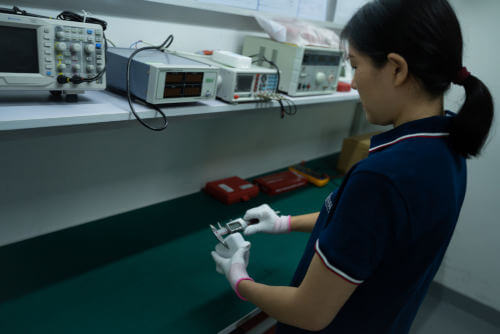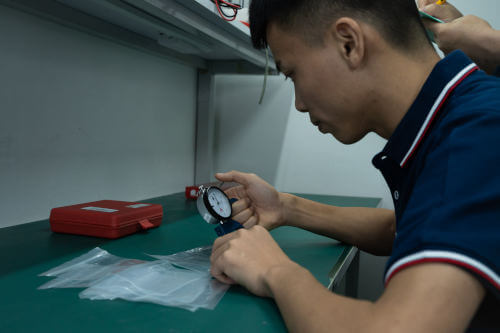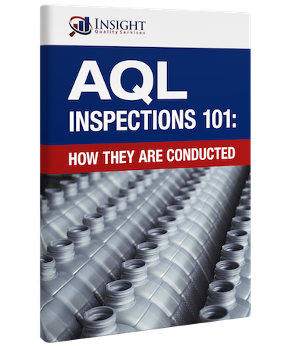Are you building a new consumer brand and putting your products out into the market? If your goods fail to meet consumer expectations, it can lead to poor reviews, reduced sales, and even business failure.
To avoid disastrous product quality issues, you need to have a quality plan — a document that, according to ASQ, outlines “quality standards, practices, resources, specifications, and the sequence of activities relevant to a particular product.”
But if you’re a small company without the resources to hire a full-time quality control and assurance team, how do you develop this plan? Here we will explain the essential elements required to create your quality plan.
Table of Contents
What Goes Into a Simple Quality Control Plan? (8 Elements)
If we follow ASQ’s guidelines for a quality plan, it should generally include:
- Objectives to be Obtained
- Steps, Operating Practices, and Procedures
- Allocation of Responsibilities
- Specific Documented Quality Standards
- Inspection, Testing, and Audit Programs
- Procedures for Modifying Your Plan
- A Method for Measuring Success/Failure
- Other Actions for Meeting Objectives
Let’s cover each of these bullet points and discuss how you might incorporate them.
#1 Objectives

If you don’t set clear objectives, how will you assess your performance effectively? Quality can mean different things to different businesses, so the process of defining what it means for your brand and target customers is essential.
Product design and specifications play a crucial role in defining objectives. So what materials go into your product, and what performance standards does it meet? If we assume that your product’s design is already finished (and it is designed well), you need to include its detailed specifications in your quality plan.
For example, if your product is a plastic cup, you might specify that it should measure 4 inches tall, 3 ½ inches across the opening, 2 ½ inches in diameter at the bottom, and the color of the cup should be cherry red. It might be made of a specific type of plastic and have a particular pattern printed on it.
Include anything relevant in your specifications, such as volume, size, shape, measurements, components, materials, colors, printing details, and more.
Think of it this way: the more detailed your specifications are, the more clear of a target the factory has. Only by defining your product specifications clearly will you be able to hold your manufacturer accountable to them. Without detailed specifications, you leave yourself open to modifications at the factory’s discretion, leading to quality fade.
#2 Steps, Practices, and Procedures

Operating your business as efficiently as possible is a worthwhile goal. So document the steps you will follow to ensure quality. For example, after placing an order with the factory, the next step might be to notify your third-party inspection company of the date the factory finishes production, so they know when to inspect.
What happens when an inspector checks your goods and discovers an issue? Your quality plan should answer this question. For example, you might agree in advance with the factory that they are responsible for the cost of reinspection after they rework the goods.
Think about all the quality-related steps you need to take and include these in your plan. Doing so will give you steps to follow so that things don’t get missed.
#3 Responsibilities
The way you divide responsibilities will depend on the size of your company — you might be a solopreneur, work with partners, have employees, or be an employee yourself. Whatever the case, you should determine who will manage the factory and third-party QC relationships day-to-day.
When issues come up, it will be clearer who is responsible for handling them. That way, you can avoid issues getting dropped due to miscommunication.
#4 Quality Standards

In section #1 (Objectives), we mentioned that you should include product specifications. Of course, you want your factory to meet these as closely as possible. But if you’re going to hold your manufacturer accountable to them, you need to have well-defined quality standards.
If you want to manage quality, it is vital to understand sampling standards for product inspections. And the most commonly used statistical tool is called Acceptance Quality Limit, or AQL.
When conducting AQL inspections, many consumer product brands consider the following to be acceptable:
- A 2.5% defect level for “major” defects
- A 4.0% defect level for “minor” defects
- A 0% defect level for “critical” defects
You need to determine what makes a defect major vs. minor vs. critical when it comes to your specific product. You also need to decide whether the 2.5/4.0/0 defect levels are appropriate for your situation. Once you’ve determined your defect classifications, AQLs, and inspection levels, you should include them in your quality plan.
#5 Inspection, Testing, and Audits

You should have three essential tools in your QA/QC toolbox to help you manage supplier quality. They are:
- Product Quality Inspections – This is where an inspector travels to the factory and verifies that products meet your quality standards. You can conduct an inspection before, during, or after a production run.
- Factory Audit – An auditor assesses your new or existing supplier’s systems and production facility. Their report helps you determine how well the manufacturer meets your needs, and you can evaluate their quality systems, social responsibility, environmental friendliness, and anything relevant.
- Laboratory Testing – The factory sends your product to a laboratory for analysis. The resulting test report helps you determine its properties — such as whether it contains harmful substances. Testing can also assess how well the product meets performance standards.
You should decide how often you will use these three tools and include this information in your quality management plan. For example, you might audit your factory before the first purchase order and then once a year after that. You also might conduct an inspection after every other production run and lab test your product once a year.
#6 Making Modifications

As your situation changes, you may need to update your quality plan. Perhaps you change a component or material in your product specifications. Or maybe your factory has been consistently hitting its quality targets, and you want to modify your acceptable defect levels or inspect less frequently. Make a note of all situations in which you will need to alter your quality plan.
#7 Measuring Success/Failure
Your inspection, audit, and lab test reports provide insight into success or failure. Reviewing these is one way to ensure that your shipments and suppliers meet your needs.
Aside from reviewing reports individually, you should track trends over time. Determine how you will use these reports and include this information in your quality plan.
#8 Other
You can include anything else you think is relevant to managing quality. For example, you might decide on steps you’ll take to maintain good relationships with your suppliers and quality service providers, such as scheduling check-ins with your contacts at a predetermined frequency.
Conclusion: Putting it All Together and Getting Results

Good quality management is essential to the health of your business, and a well-written quality plan can help you achieve your desired results. To develop your quality plan, consider each of these eight elements carefully.
By fleshing out the key points we’ve listed, you’ll have the information you need to develop a simple quality plan. It may not be perfect at first, but you should treat it as a living document and update it periodically as you learn more about what it takes to manage product quality.
We recommend the following guide if you plan to conduct AQL inspections and want to understand how they work.
Free White Paper: AQL Inspections 101
As a consumer goods importer, the quality of your products is key to your success. Good quality products will earn you favorable reviews and repeat purchases. Thus, product inspections are essential. Having a good grasp of AQL sampling allows you to work with your third-party inspectors more effectively. Our AQL 101 white paper will teach you all the basics of the AQL method.





the link to AQL Inspections 101 doesn’t work…
Hello Irvine,
The page is now live again at https://insight-quality.com/aql-inspections-101/. Apologies for the temporary disappearance.
Thanks for sharing this information.
We’re glad you found it helpful, Aidan.